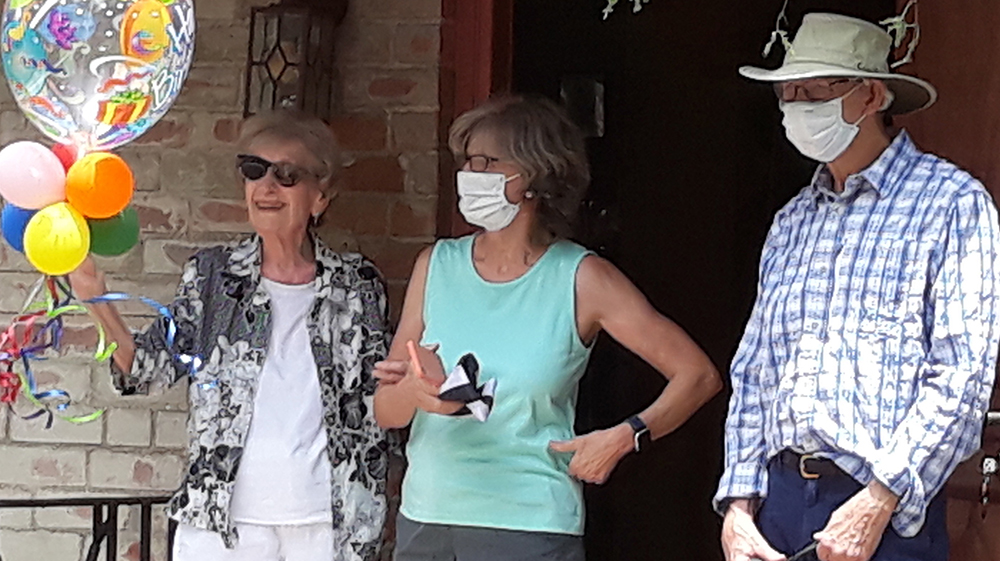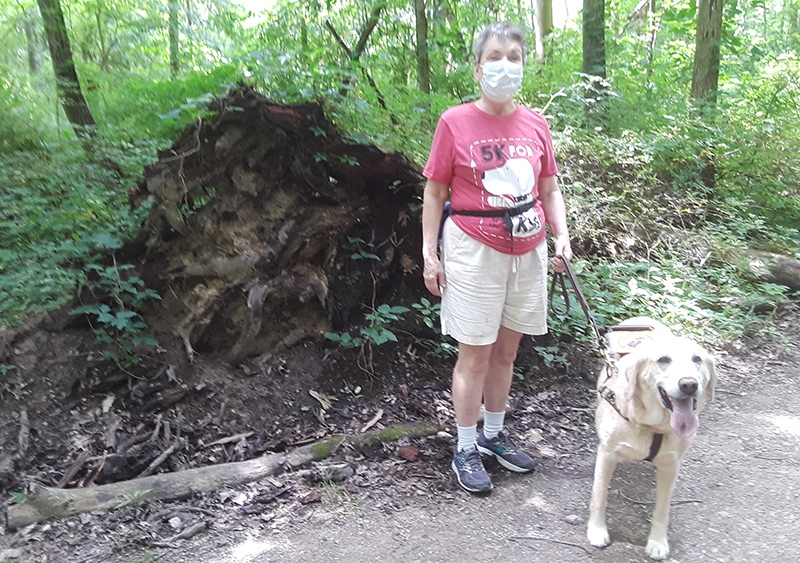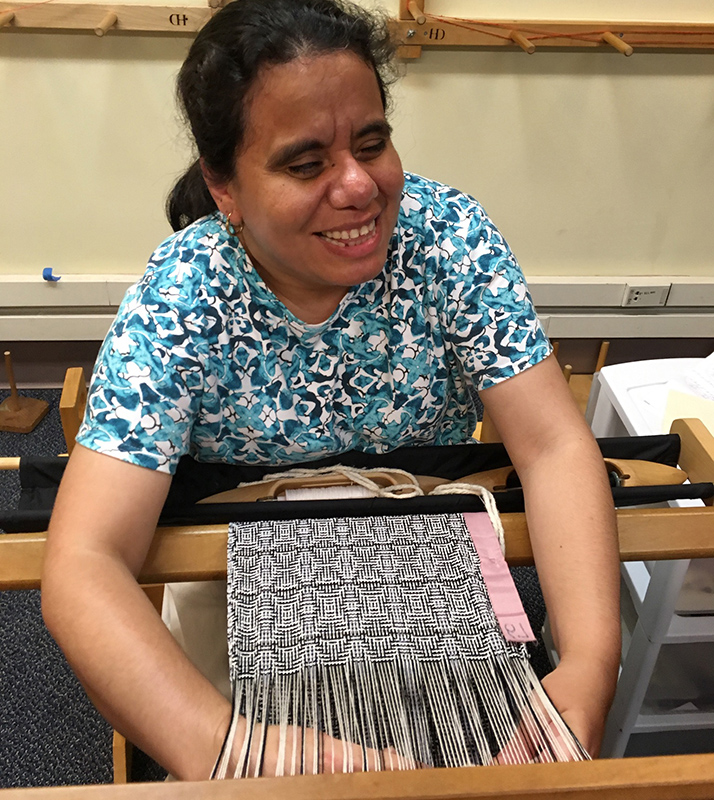I have had fleeting what-if thoughts about my going right 'round the bend if all this goes on for months longer than we anticipate; but, thus far, my wife is here, and one of our very helpful adult children lives in a nearby city.
—Congenitally VI White male, aged 65 to 74 years, with no additional disabilities
The COVID-19 pandemic has affected the social experiences of all Americans as stay-at-home orders limited access to others, social distancing necessitated not having physical contact with people, and individuals' anxiety, fear, and stress increased as the number of COVID-19 cases and deaths in the U.S. continued to rise throughout March and April, 2020.
Of the 1,921 participants, 1,025 (56%) had concerns about social experiences due to COVID-19 and answered questions about this topic, 125 (7%) had concerns about social experiences but did not choose to answer questions, and 660 (37%) did not have concerns about social experiences.
Participants provided their level of agreement to seven concern statements. 9
- I am concerned about asking someone to physically assist me with tasks such as grocery shopping or going to medical appointments due to practicing social distancing. (n=938, M=4.00, SD=1.16)
- I am concerned about asking someone to be my human guide in the community due to practicing social distancing. (n=888, M=4.00, SD=1.18)
- Due to practicing social distancing, I am concerned about asking someone to touch my hands/allow me to touch their hands, for example when using tactile sign language or being shown how to do something using hand-over-hand. (n=726, M=3.97, SD=1.15)
- I am concerned that because of social distancing, (staying more than 6 feet apart from others) I feel more depressed, sad, or lonely. (n= 998, M=3.70, SD=1.15)
- Since the COVID-19 pandemic began, I have increased anxiety, fear, or concern about my health and well-being. (n=990, M=3.66, SD=1.13)
- I am concerned about my mental health and fear I may be overwhelmed or have a breakdown due to all the things that are out of my control. (n=997, M=2.83, SD=1.33)
- I am concerned that I do not have access to technology tools that allow me to connect with family, friends, or others. (n=943, M=2.09, SD=1.11)
Those participants who faced significant social barriers before the COVID- pandemic reported these barriers were compounded due to factors such as having limited income, living alone, having minimal or no support systems, and/or having additional disabilities. Participants shared their thoughts and emotions, the challenges of social distancing, the importance of social networks, and strategies they found helpful to maintain a positive balance in their lives.
Feelings and Emotions
Participants were asked to rate their level of agreement with the statement: "I am concerned that because of social distancing (staying more than 6 feet apart from others) I feel more depressed, sad, or lonely." Of the participants who rated this statement more females (46%) than males (21%) expressed they agreed or strongly agreed and those 55 years and older had the highest concern (24%) among the three age categories. Participants with a congenital vision loss (43%) had greater concern than those with a childhood vision loss (8%) or vision loss during adulthood (15%). This statement was of higher concern to those who were blind (42%) compared with those with low vision (23%). There was a higher level of concern for participants who did not have an additional disability (34%) compared with those who did have an additional disability (32%).
Not surprisingly, social isolation bought about by stay-at-home orders and the need to social distance caused many participants to feel anxious, isolated, and/or fearful about the future. For those participants who were experiencing life challenges prior to COVID-19, the pandemic exacerbated these challenges.
One's attitude toward their visual impairment, the pandemic, and life in general can influence reactions to challenging events and one's outlook. There were a few participants, however, who were able to "look on the bright side."
I have had mental health issues in the past, which I attributed to my vision impairment [that] I have had since birth—specifically anxiety and clinical depression. I have been successfully treated and feel that I am very stable at this point. I have adopted a 'failure is not an option' mindset.'
—Adult-onset VI White female, aged 65 to 74 years, with no additional disabilities
Participants were asked to rate their level of agreement with the statement: "Since the COVID-19 pandemic began, I have increased anxiety, fear, or concern about my health and wellbeing." Of the participants who rated this statement more females (45%) than males (20%) expressed they agreed or strongly agreed and those 55 years and older had the highest concern (27%) among the three age categories. Participants with a congenital vision loss (41%) had greater concern than those with a childhood vision loss (9%) or vision loss during adulthood (16%). This statement was of higher concern to those who were blind (41%) compared with those with low vision (24%). There was a slightly higher level of concern for participants who did have an additional disability (33%) compared with those who did not have an additional disability (32%).
I need physical touch to connect with people. I need handshakes and hugs that Sunday always brought from going to church. I was waiting on a counselor to be available to get me through a [crime I experienced] before COVID-19. ... Now we are supposed to stay home and keep at least 6 feet from others. I've been alone with my own thoughts since mid-February. Depression has set in, my PTSD hasn't been put back in check from the [crime], and neither has anxiety. I'm just a wreck.
—Adult-onset VI Multiracial female, aged 35 to 44 years, with additional disabilities
Social Distancing
Participants were asked to rate their level of agreement with the statement: "I am concerned about asking someone to physically assist me with tasks such as grocery shopping or going to medical appointments due to practicing social distancing." Of the participants who rated this statement more females (52%) than males (23%) expressed they agreed or strongly agreed and those 55 years and older had the highest concern (29%) among the three age categories. Participants with a congenital vision loss (50%) had greater concern than those with a childhood vision loss (9%) or vision loss during adulthood (17%). This statement was of higher concern to those who were blind (53%) compared with those with low vision (23%). There was a higher level of concern for participants who did not have an additional disability (41%) compared with those who did have an additional disability (34%).
Being visually impaired typically necessitates a higher level of physical contact compared with sighted peers. For example, when using human guide, the person who is visually impaired holds the guide's arm above the elbow. For some who are deafblind, the use of tactile sign language requires the two individuals to touch each other's hands. In some communities, there was more strict enforcement of social-distancing policies. Participants noted when they were not abiding by distancing policies in stores, other customers or employees occasionally made comments or the participants worried about others making comments.
Participants were asked to rate their level of agreement with the statement: "Due to practicing social distancing, I am concerned about asking someone to touch my hands/allow me to touch their hands, for example when using tactile sign language or being shown how to do something using hand-over-hand." Of the participants who rated this statement more females (47%) than males (25%) expressed they agreed or strongly agreed and those 55 years and older had the highest concern (28%) among the three age categories. Participants with a congenital vision loss (46%) had greater concern than those with a childhood vision loss (9%) or vision loss during adulthood (18%). This statement was of higher concern to those who were blind (53%) compared with those with low vision (20%). There was a higher level of concern for participants who did not have an additional disability (39%) compared with those who did have an additional disability (34%).
The Importance of Social Networks
People are social beings by nature. The COVID-19 pandemic has affected the way people interact with each other. For some, technology has enabled them to stay connected or even, in some cases, forge new connections.
I stay in contact with my friends and family using text, Facebook, phone calls, FaceTime, and Zoom. I talk to three to four people a day that are not in my house. And my husband is supportive, and we are each other's favorite people so spending time together is helpful to our mood. ... I miss my friends and family... [b]ut staying in contact has not been a problem.
—Adult-onset VI White female, aged 35 to 44 years, with no additional disabilities
Prior to the COVID-19 pandemic, many participants reported they routinely left the house to attend faith-based services, volunteer, go to class, work, exercise, and otherwise socialize. The quick shift to stay-at-home orders, companies having employees working from home, and online classes challenged many participants. In some cases, consequences of the stay-at-home orders led participants to experience depression, anxiety, or feelings of isolation.
I'm being asked to work at home full time. While I know that is the safest thing to do, work for me is also a social outlet, and I miss going to the office and mingling with my co-workers. I'm feeling very isolated and am glad for organizations like ACB [American Council of the Blind], as well as being able to connect with family and friends to help me get through this situation.
—Congenitally VI White male, aged 55 to 64 years, with no additional disabilities
Participants discussed the importance of family in their lives. Having regular contact with a spouse, children, or other relatives enabled them to maintain social equilibrium. There were a few participants who spoke of the value of consumer organizations in their lives. Specifically, connecting with others who are visually impaired allowed participants to affirm their experiences with others as they have similar life experiences. Connecting with others also allowed for sharing practical strategies and finding empathy from others who "get it" because they too are visually impaired.
I'm lucky that I have a strong family support system. While I do have anxiety and mild depression, I am able to lean on family and God's love to help get me through this.
—Congenitally VI White female, aged 55 to 64 years, with additional disabilities
Strategies Participants Utilized to Improve their Outlook
The uncertainty of the COVID-19 pandemic, coupled with the challenges of visual impairment, introduced more complications for study participants. For example, while using FaceTime or Zoom, participants shared concerns about not being able to see the people they were visiting with or feeling left out of the interaction. They expressed uncertainty about how others would interpret their request for a human guide. Prior to the COVID-19 pandemic, many participants had people in their lives who provided support with tasks such as reading mail, shopping, or joining them to exercise. Many, if not all, of these interactions abruptly stopped for most participants as COVID-19 concerns became more widespread.
Participants were asked to rate their level of agreement with the statement: "I am concerned about asking someone to be my human guide in the community due to practicing social distancing." Of the participants who rated this statement more females (50%) than males (25%) expressed they agreed or strongly agreed and those 55 years and older had the highest concern (30%) among the three age categories. Participants with a congenital vision loss (48%) had greater concern than those with a childhood vision loss (10%) or vision loss during adulthood (17%). This statement was of higher concern to those who were blind (55%) compared with those with low vision (20%). There was a higher level of concern for participants who did not have an additional disability (40%) compared with those who did have an additional disability (34%).
Although some participants expressed frustration with technology, others discovered that technology was a positive social connector.
Tech is the only thing keeping many of my friendships intact right now. It is also the only thing allowing my partner and [me] to have interaction with people besides one another. I have always been grateful for technology, but never more than now.
—Congenitally VI White female, aged 35 to 44 years, with no additional disabilities
As a way to reduce their stress and to gain more balance in their lives, some participants discussed activities or practices they participated in on a regular basis.
I have definitely felt overwhelmed and stressed at times during this experience. ...I work really hard to remember that I am in control of a lot of things right now still. I also use the practice of gratitude journaling every day to remind me of the good things that are still happening in my life."
—Congenitally VI White female, aged 25 to 34 years, with no additional disabilities
Recommendations
The pandemic has created social barriers for all people. Participants who are visually impaired identified the following unique challenges caused by the pandemic: the unavailability of physical touch as a primary sensory experience, the inability to gauge distance from others, societal misconceptions of those with visual impairments, inaccessible virtual platforms for social and recreational activities, and the inability to find individuals willing to provide human guide assistance. For some participants, mental health challenges and social isolation were exacerbated due to the COVID-19 pandemic. At the same time, some participants found themselves using new technologies to maintain social connections.
- Organizations that advocate for those with visual impairments should develop public service announcements, trainings, and other ways to educate the public about the human guide technique, so that the public understands that someone with a visual impairment may not be able to always maintain a social distance.
- Mental health providers who do not have knowledge of the challenges people with disabilities face, which are exacerbated by COVID-19, need up-to-date training to meet the needs of adults who are visually impaired. Consumer organizations, vocational rehabilitation professionals, and others can work with mental health providers to design training materials, which can be widely distributed.
- To encourage participation in exercise and to ensure full participation, recreational instructors providing in-person or online classes and/or companies developing exercise apps need to ensure they provide clear verbal explanations of movements, decrease the level of the music so participants can hear directions, and for apps, build-in accessibility to allow those using screen reader software or visual access to fully take advantage of all features of the app.
- Commercial product developers should build accessibility and usability into all features of their apps and websites and provide accessible training materials that will enable users to build skills and confidence with the products.
- Companies that provide visual interpreting services, such as Aira or Be My Eyes, need to be universally available or inexpensive so any user can afford to use them to assist them with social distancing, exercising, shopping, etc.
- Games need to be accessible so that those with vision loss can play in the same way as sighted people. Both online games and those played in the physical world must be developed with inclusive design in mind.
9. The mean (M) is derived by averaging the participants' ratings, strongly disagree (1) to strongly agree (5). The larger the standard deviation (SD) the greater the spread from the mean of the participants' ratings.


